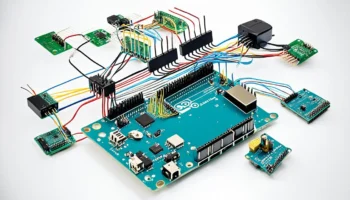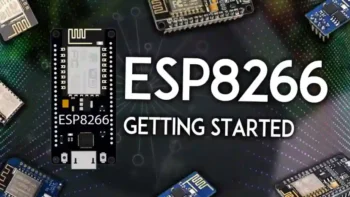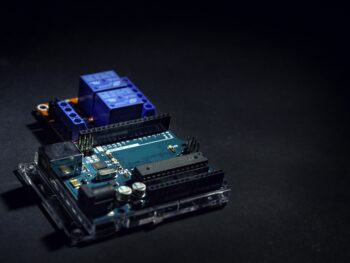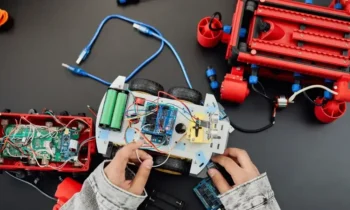Introduction to Fire-Fighting Robots
In today’s technology-driven world, innovation has reached every corner of our lives. One such groundbreaking development is the advent of fire-fighting robots. These robots have revolutionized fire safety by offering efficient and effective solutions to combat fires in various scenarios. By utilizing advanced technologies like Arduino, these robots have become powerful tools in safeguarding lives and minimizing property damage.
The Importance of Fire Safety
Fire safety is a critical aspect of our lives that should never be overlooked. Fires can cause devastating consequences, leading to loss of life, destruction of property, and environmental damage. It is imperative to have robust fire safety measures in place to prevent and extinguish fires promptly. Fire-fighting robots play a vital role in this regard, as they can access dangerous areas and combat fires in situations where human intervention may be limited or risky.
Overview of Arduino and Its Applications in Robotics
Arduino, an open-source electronic platform, has gained significant popularity across various domains, including robotics. It provides a flexible and cost-effective solution for designing and prototyping robotic systems. Arduino’s versatility allows developers to create custom-made robots with specific functionalities. By leveraging Arduino’s capabilities, engineers can design fire-fighting robots that are intelligent, agile, and capable of navigating challenging environments.
Designing a Fire-Fighting Robot Using Arduino
To design a fire-fighting robot using Arduino, one must consider several factors. The robot’s design should prioritize safety, efficiency, and ease of use. The first step is to understand the circuit diagram, which serves as the foundation for the robot’s functionality. This diagram outlines the connections between various components, such as motors, sensors, and the Arduino board.
Incorporating a Flame Sensor in the Robot’s Design
A crucial component in a fire-fighting robot is the flame sensor. This sensor detects the presence of fire and triggers the appropriate response from the robot. It operates based on the principle that flames emit specific wavelengths of light, which can be detected by the sensor. Understanding the circuit diagram for the flame sensor is essential to integrate it seamlessly into the robot’s design.
Working Principle of a Flame Sensor
The working principle of a flame sensor revolves around the concept of infrared detection. When a fire is present, the flames emit infrared radiation. The sensor detects this radiation and converts it into an electrical signal. This signal is then processed by the Arduino board, which triggers the robot’s actions accordingly. By comprehending the working principle of the flame sensor, designers can optimize its performance in fire detection.
Step-by-Step Guide to Building a Fire-Fighting Robot
Building a fire-fighting robot using Arduino requires a systematic approach. Here is a step-by-step guide to help you get started:
- Gather the necessary components, including Arduino board, motors, flame sensor, chassis, and fire extinguisher mechanism.
- Study the circuit diagram and understand the connections between the components.
- Assemble the robot’s physical structure, ensuring stability and proper placement of components.
- Connect the motors, flame sensor, and fire extinguisher mechanism to the Arduino board as per the circuit diagram.
- Upload the appropriate code to the Arduino board, which enables the robot to detect flames, move towards the fire source, and activate the fire extinguisher mechanism.
- Test the robot’s functionality in a controlled environment, ensuring its responsiveness and accuracy in fire detection and extinguishing.
- Troubleshoot any issues that may arise during testing, such as sensor calibration or motor control.
Testing and Troubleshooting the Robot
Once the fire-fighting robot is built, it is crucial to thoroughly test its functionality and address any potential issues. Testing should include scenarios simulating real-world fire situations to ensure the robot’s effectiveness. Additionally, troubleshooting should be performed to identify and resolve any problems related to sensor calibration, motor control, or code optimization. Regular maintenance and periodic testing are essential to keep the robot in optimal working condition.
Future Developments in Fire-Fighting Robot Technology
The field of fire-fighting robot technology is continuously evolving, and future developments hold great promise. Researchers are exploring advanced algorithms to enhance the robot’s navigation and decision-making capabilities. Integration of artificial intelligence and machine learning algorithms can enable the robot to learn from previous fire-fighting experiences and make more informed decisions in real-time. Furthermore, advancements in sensor technology and materials science can lead to more sensitive and durable flame sensors, making fire detection even more reliable.
Conclusion
The design and development of an Arduino-powered fire-fighting robot is a significant step towards revolutionizing fire safety. By leveraging the capabilities of Arduino and incorporating a flame sensor, these robots offer an efficient and effective solution to combat fires in various environments. It is essential to follow a systematic approach while building the robot, ensuring proper understanding of the circuit diagram and the working principle of the flame sensor. Regular testing, troubleshooting, and future advancements in the field will further enhance the capabilities of fire-fighting robots, making them indispensable tools in ensuring our safety and protecting lives and property.







